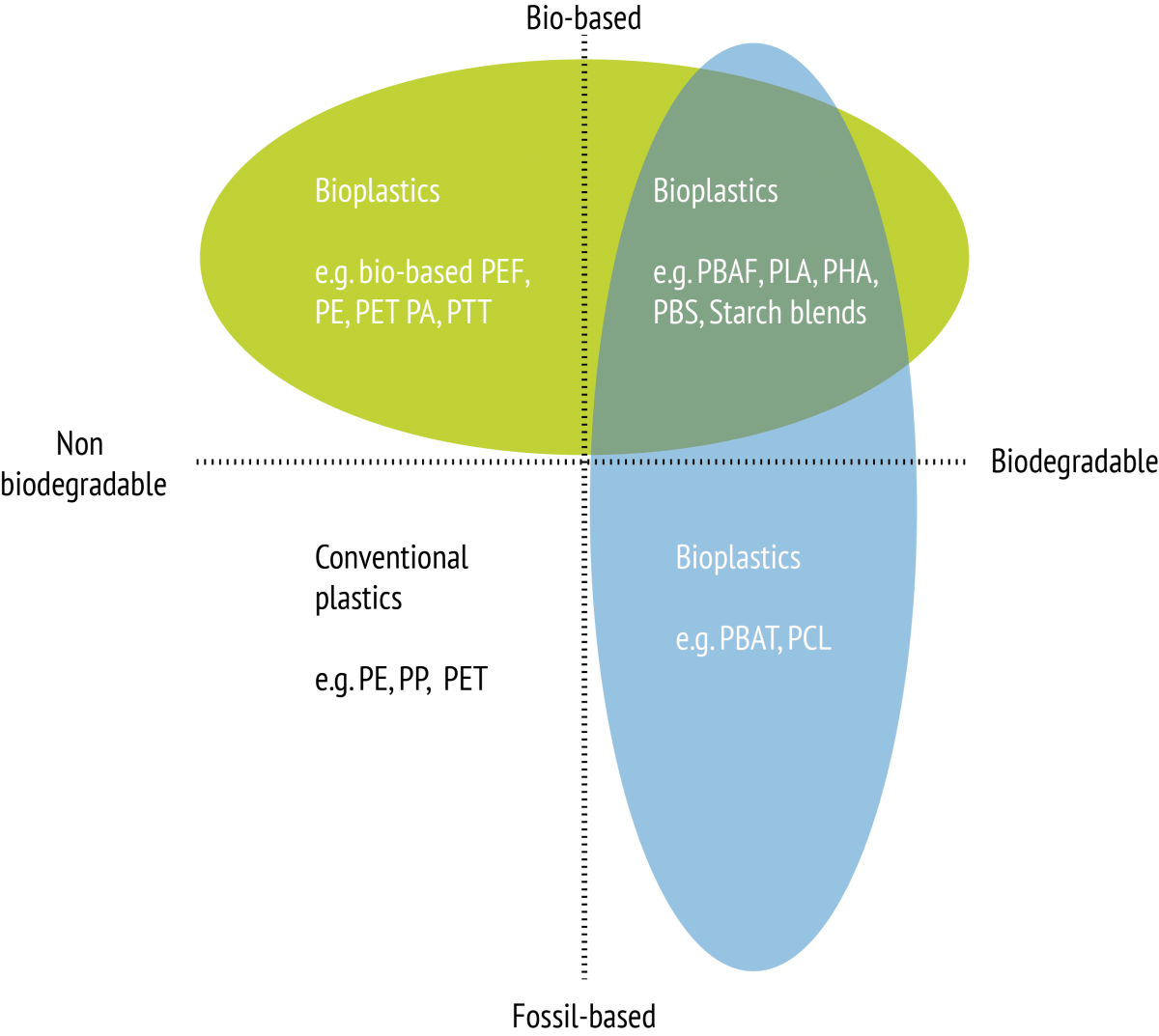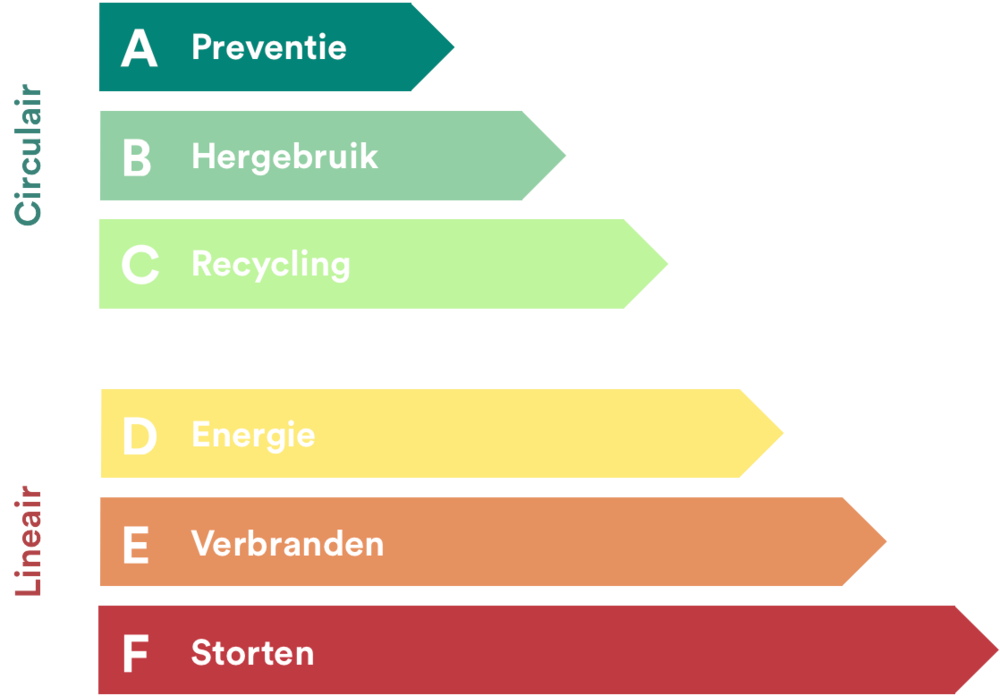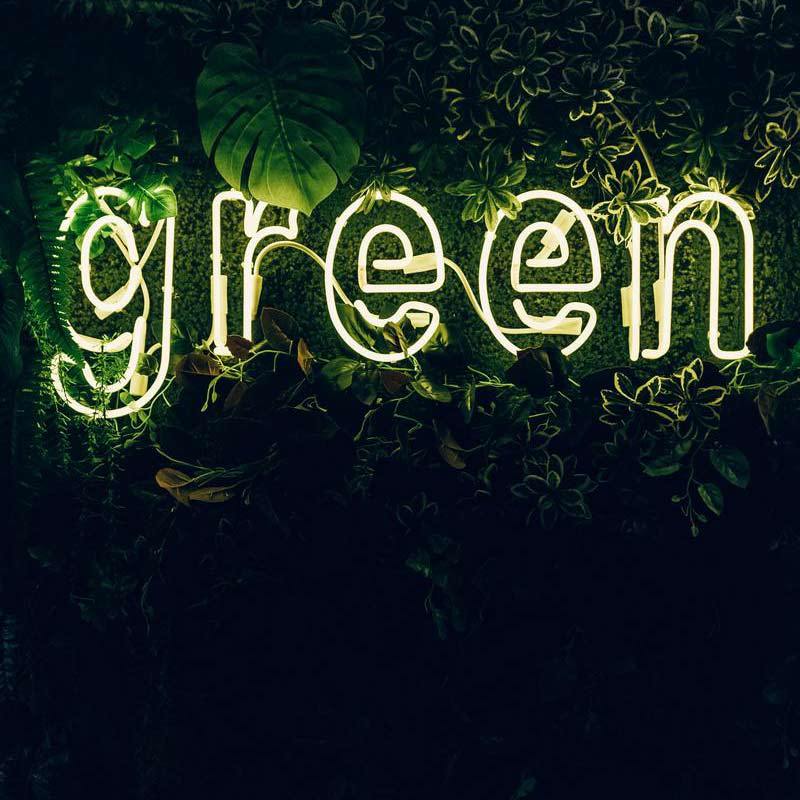How do you make sustainable choices for events?
Biobased, biodegradable or compostable. All terms that sound very sustainable but in reality it is more complicated. With the implementation of the Single Use Plastics Directive (SUP) and other changes in regulations in 2021, more and more plastic disposable products will have to be replaced by a more sustainable alternative. In this article from Plastic Promise, Laura van de Voort, together with experts Jelmer Vierstra (Nature & Environment) and Agnieszka van Batavia (The LCA Centre) separate the facts from the fables to help you make sustainable choices.

|
 |
| Jelmer Vierstra | Agnieszka of Batavia |
Biobased, biodegradable or compostable?
Let's start at the beginning. What is the difference between biobased, biodegradable and compostable? We asked Agnieszka van Batavia, sustainable packaging consultant at The LCA Centre.
Biobased
Biobased is a term that refers to the beginning of the chain - the origin of the raw material from which a material such as plastic is made. It means that this raw material is made from biomass and is therefore renewable, in contrast to most plastics, which consist mainly of petroleum (fossil). But this says nothing about 'sustainability'. Examples of biobased products are cups made of PLA, and biobased-PE coatings in cardboard cups.
Biobased can be made from residual streams or raw materials that are grown and harvested specifically for the product and thus require agricultural land and water. Most plastics are made from fossil raw materials, for example PET, PP and PE. Fossil raw materials are therefore not biobased.
Biodegradable
The terms biodegradable and compostable refer to the end of the life cycle of a product and are not synonymous with sustainable. They indicate that the material can be degraded by the natural activity of micro-organisms, in some cases under natural conditions (i.e. in nature). But this often only happens under industrial conditions (i.e. in a professional composting plant). Because ''the decomposition'' takes a long time anyway and in many cases does not take place under natural conditions, compostable is not a solution for litter and plastic soup. All compostable materials are biodegradable, but not all biodegradable materials are compostable.
Jelmer Vierstra: A PLA beer mug is compostable, but does not decompose under natural conditions. It is not a solution for litter and plastic soup. It rather creates confusion, because people sometimes have the idea that these products naturally decompose.
Composting
Composting is a man-made process that requires a controlled environment where time cycle, temperature and humidity require or demand attention. Current composting facilities operate with a lead time of 2 to 4 weeks. Not all materials used for (food) packaging can be processed in this short period. In addition, this does not always produce the right compost that meets the specific quality requirements and can therefore be used to enrich the soil. De Monitor previously made an interesting broadcast about this.
Only useful if it leads to increased collection of organic waste
In the past, a number of festivals have carried out pilot projects involving the composting of food packaging, but this solution cannot yet be used on a large scale. In addition, it is only useful if it leads to an increased collection of organic waste. Composting PLA cups is not a sustainable solution. You would lose the raw material and it would not enrich the compost, because it would be converted into CO2 and water.

Source: European Bioplastics
Biobased materials are not by definition biodegradable or compostable
And now the combination of beginning and end is in sight: not all biobased materials are biodegradable or compostable. Nor is this necessarily desirable, especially when it concerns so-called drop-in plastics such as bioPP or bioPET which are recyclable within existing recycling systems. These plastics are chemically 100% similar to the fossil versions and can be recycled in the same way as the fossil versions. You want to avoid that these products are mistaken for biodegradable, because they are not. The use of the term biobased sometimes leads people to think this.
On the other hand there are fossil materials that are biodegradable or compostable. European Bioplastics has made a handy overview of this.
Prohibition on single use plastics (SUP)
Previously we wrote an article about the changes in the law. article about the upcoming changes in law & regulations. In addition to the introduction of a deposit on small bottles, from 3 July 2021 there will also be a ban on a number of single use plastic (SUP) products such as plates and cutlery. This ban also applies to alternative products made from bioplastics. But what is a sustainable choice?
Use as few materials as possible
Always try to work with as few materials as possible, and be careful not to use more materials than necessary. In many cases, a reusable alternative is the most sustainable. In any case, it creates as little litter as possible and also has the most sustainable image. You can do this by comparing and testing different options. If you really want to take a step towards circularity, investigate how you can use reusable food packaging in addition to the cups.
According to Agnieszka from Batavia, the choice of the most appropriate packaging depends very much on the application. What are you going to serve and to whom will be decisive in the choice of packaging. Think for example of (uncoated) kraft cardboard or do you need something more solid such as compostable materials including bagasse, palm leaf or falcata wood?
PLA is also plastic
In November 2020, we published the research report The study showed that the environmental impact of a biodegradable PLA cup is higher than that of a PP or PET cup. The study showed that the environmental impact of a biodegradable PLA cup is higher than that of a cup made of PP or PET. But PLA is not made from fossil raw materials, is it? How can it be worse for the environment?
Jelmer Vierstra: In general, bio-based is more climate-friendly than fossil-based, after all, a plant first takes CO2 out of the air. But it is not as certain as it seems. The environmental impact of plastic products depends on many factors, for both bio-based and fossil plastics. Depending on the agricultural practices, the technical processing into a plastic and which waste processing options are available, the environmental impact varies greatly. Because of these factors, bio-based plastics may have a worse impact on the climate than fossil-based plastics. As in the example of the PLA beer mug. The biobased plastics action plan provides clear guidelines on how the sustainability of biobased alternatives should be assessed.

Source: A study of the waste free cup systems at events
Using less (fossil) raw materials
Jelmer Vierstra: Besides using much less single-use plastic, the main challenge is to recycle plastics much better, so less primary raw material is needed and no more plastic ends up in the environment. It will probably not be possible to make plastics completely circular, because the recycling processes always result in material losses.
Renewable raw materials
This means that in the long term a stream of 'new raw materials' will be needed to close the chain. We must produce that raw material in a renewable way, but we must look at it carefully. Renewable is not automatically the same as sustainable. In practice, renewable means that the raw materials come from agricultural processes. The use of residual streams reduces the overall impact, but is also not without sustainability risks. Residual streams are for instance needed to maintain the soil quality of the field, and they cannot be disposed of indefinitely and used to make biobased plastic.
Environmental impact throughout the chain
Agnieszka van Batavia: When making a Life Cycle Assessment (LCA), it is important to look at the impact of the entire chain and not just at the environmental impact of one kilogram of a certain raw material. A bio-based raw material may have a lower environmental impact, but that does not always translate into a product that scores better. This is because the processing of this bio-based raw material requires extra processes and/or additives that greatly increase the environmental impact of the end product. This approach has now also been included in the Dutch Biobased Plastics Action Plan.

Ladder of Lansink
Sustainable procurement
Are you about to organize an event, as soon as this is allowed again? Then use this time to prepare well for upcoming changes in laws and regulations. And take into account the impact on the environment when making your purchasing choices. The Ladder of Lansink The website gives you good guidance.
Do these steps not offer a solution for you? Then choose a product whose production has the lowest environmental impact when incinerated as residual waste.
Webinar waste-free cup systems
During the week of the Circular Economy, on thursday February 4, 11.00-12.45 Plastic Promise organizes in cooperation with Green Events, municipality of Rotterdam, municipality of Utrecht, municipality of Zwolle and municipality of Apeldoorn a Webinar on waste free cup systems. During this webinar you will learn all about the sustainable choices in the field of reusable and recyclable cups. In addition topics like changes in regulations and sustainable food packaging will be discussed.
Author: Laura van de Voort ( link article Plastic Promise)

